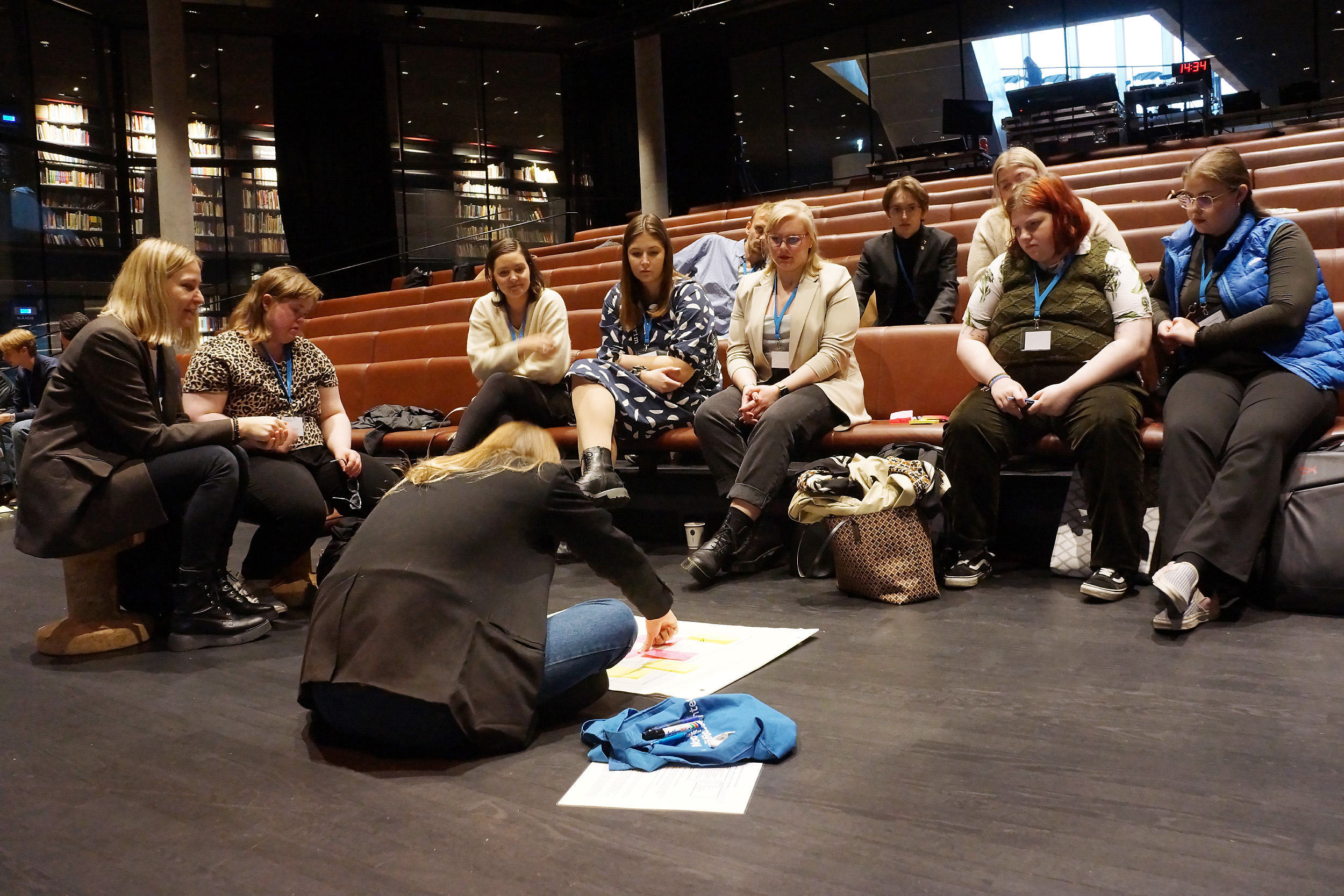Method
The analysis and recommendations in this report are based on conversations with around 100 representatives of youth and national experts in the Nordic region, covering the Nordic countries and Greenland, Åland and the Faroe Islands.
The conversations with youth and adult experts were carried out through eight transnational focus groups and concluded during a youth summit in Oslo from 17–18 October 2022. The summit was jointly organised by the Nordic Welfare Centre and the Norwegian Directorate for Children, Youth and Family Affairs (Bufdir).
Children and youth representatives from a wide range of organisations have participated. These include national umbrella organisations for child and youth organisations, national pupil and student council organisations, national and local youth councils, as well as organisations representing children and youth with disabilities. In addition, the Association of Local and Regional Authorities for all local governments in the Nordic countries and the Children's Ombudsmen's offices were invited. At the conference decision makers and youth representatives jointly discussed child and youth participation in crises and made recommendations for decision makers, many of which are included in this report.
A Nordic expert group comprising a wide range of experts from the Nordic region has contributed to the report in focus groups and during the conference, as well as research teams at the Finnish Youth Research Society and the Danish Center for Social Science Research.
The authors of this report have also conducted a brief literature review of promising practice and recommendations for crisis management, disaster risk reduction and child and youth participation.
The quotes in the report are from participants in the focus groups and from the conference. Most of the quotes indicate name and organisation but some of the participants have asked to have their names removed, meaning these quotes are anonymous. The analysis is based on perspectives and input from conversations with participating youth representatives and decision makers, combined with evidence, research and best practice on child and youth participation in times of crises. In some cases, the quotes have been slightly adjusted or shortened for the sake of clarification.

Structures for child and youth participation
The structures for the participation of children and youth vary between and within countries, as well as throughout the Nordic region. For instance, they differ in how they are implemented and at what level, and in how or whether they are regulated.
This report describes some of the most common structures for child and youth participation. Below is a brief description of these structures: child and youth organisations, including organisations that represent children and youth with disabilities, local youth councils, student councils and national umbrella organisations. For further reading, we would recommend the report Children's and young people's participation during the corona pandemic – Nordic initiatives. This report covers important initiatives that were used in the Nordic region during the pandemic.
Child and youth organisations
Child and youth organisations is a broad term that describes a wide range of civil society organisations led by children or youth. Some of these organisations focus on promoting children’s and young people’s rights, while others offer opportunities for personal and social development through various kinds of activities. Many of the organisations combine both types of work. It is common for child and youth organisations to be active on both a local and a national level.
Organisations representing children and youth with disabilities
Some of the Nordic countries have youth organisations that represent children and youth with disabilities. The focus of these organisations ranges from specifically covering only one type of disability to a more general focus, representing children and youth with different kinds of disabilities. In some cases, children and youth with disabilities are not organised in separate child and youth organisations but are part of an advisory board in a disability organisation that caters for all ages.
Local youth councils
In local youth councils, young people engage with municipal decision makers. The council is often initiated and organised by the municipality. Depending on the structures and regulations in place, the purpose of local youth councils varies, but can include giving advice to local decision makers, sharing young people’s views, or in other ways advocating for the rights of children and youth in the municipality.
Student councils
Student councils comprise a group of students in primary or secondary school elected by their student peers to represent them in relation to the head teacher and/or other teachers. Through student councils, students can share their ideas, interests and concerns with the school management. Student councils may also be involved in social events and/or community projects. On a local level, youth councils and student councils sometimes work together.
National umbrella organisations
Some of the Nordic countries have a cooperative body or national umbrella organisation for disability organisations, local youth councils and/or student councils. Most parts of the Nordic region also have a national umbrella organisation for all child and youth organisations. They aim to collectively improve the democratic rights and conditions for their members.